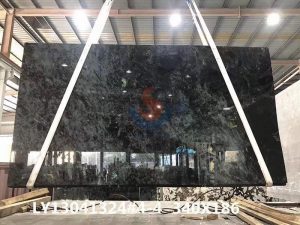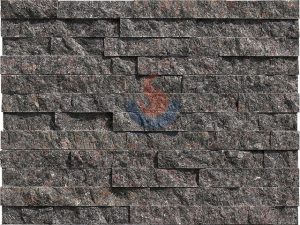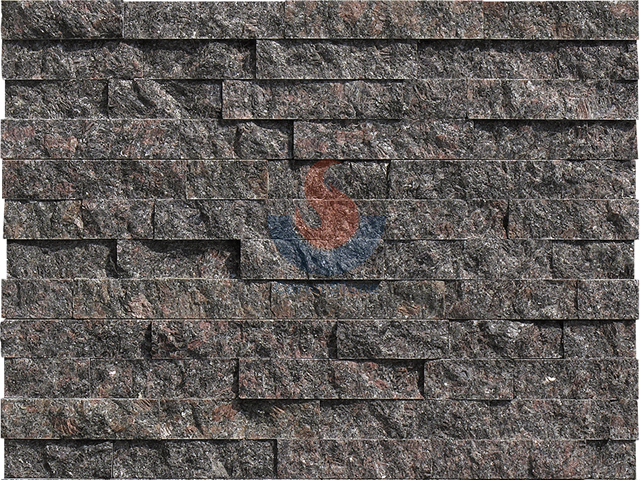In this world, few people don’t like granite. For Chinese people, many famous mountains in China, such as Huangshan, Jiuhuashan, and Tianzhushan in Anhui, Sanqingshan and Lushan in Jiangxi, Taishan and Laoshan in Shandong, Huashan and Taibaishan in Shaanxi, Qianshan and Yiwulüshan in Liaoning, Hengshan in Hunan, Putuoshan, Moganshan, and Tiantaishan in Zhejiang, Keshiketeng Stone Forest in Inner Mongolia, Taimushan and Gulangyu in Fujian, Luofushan in Guangdong, Gonggashan in Sichuan, Helanshan in Ningxia, Wuzhishan, Luhuitou, Tianyahaijiao in Hainan, as well as Greater and Lesser Xing’an Mountains and Qilian Mountains, can all be seen with granite landforms.

The Blue Labradoriteblue Australe Granite origin from Madagascar
In human society, granite has become one of the most widely used indoor and outdoor building decoration materials because of its gorgeous colors, stable chemical properties, and excellent physical and mechanical properties.
Many magnificent construction projects in China, such as the Great Hall of the People in Beijing, the National Grand Theater of China, the Sun Yat-sen Mausoleum in Nanjing, the historical buildings of the Bund in Shanghai, the Luoyang Bridge and the East-West Towers in Quanzhou, the Potala Palace in Lhasa, and the German buildings in Qingdao, also have extremely rich granite elements.
As an important petrological symbol that distinguishes the Earth from other planets in the solar system, granite is like an art gallery of nature. No matter what kind of granite, it has amazing beauty.
If we simply distinguish them by patterns and colors, there are hundreds of types of granite products commonly used by humans in the world, which can be said to be very rich.
Common granite products basically have no colored stripes, only colored spotted patterns. It is the magic of nature that has created all these forms of granite.
Geological origin of granite
Billions of years ago, the Earth was formed by the fractionation, collapse, and condensation of the original solar nebula. Each planet that fell on the primitive Earth had high kinetic energy, which was converted into heat energy due to impact. Later, this heat energy was preserved due to the increase in the Earth’s external weight and the compression of the interior. In addition, the heat accumulation generated by the decay of radioactive elements such as uranium, thorium, and potassium caused the Earth to heat up, causing the melting of most of the materials inside the Earth.
Since the crust of the primitive Earth was rich in iron, magnesium, and silicon, the initial melting only produced basaltic magma, which then formed the basaltic layer of the oceanic landform.
But when the basaltic rock melted again, the light materials with low density continued to rise and gather, and gradually formed silica-alumina magma, that is, the granite layer with silica-alumina as the main components that constitutes the continental landform.
As time went on, the preserved continental crust was melted many times, causing its composition to continue to increase in silica-alumina, and the remaining mafic iron returned to the mantle in an appropriate way.
This process was repeated, causing the Earth’s continental crust to continue to develop in a stable direction, and eventually formed today’s Earth terrain.
It is also in the process of geological changes that the main elements such as silicon and aluminum are fully mixed under the participation of melting and water, and after cooling, a uniform porphyritic texture is formed. Due to the differences in the original composition of the melt, the cooling rate of the magma, the rate of crystal nucleation, the pressure change, the amount of volatile substances and the viscosity of the fluid in different places, various granites with different appearances are formed in different places.
Mineralogical analysis of granite
From the perspective of modern mineralogy, we believe that granite is mainly composed of feldspar and quartz with silicon and aluminum as the main elements, mica containing iron and magnesium and amphibole, pyroxene, olivine, serpentine, etc.
Among them, orthoclase is usually grayish white, yellowish brown, and flesh-red, plagioclase is usually grayish white, quartz is usually transparent or gray, biotite is usually black, brown, red, and green, and pyroxene and amphibole are usually black, dark green, and dark brown. Generally speaking, black, dark green, and yellow-green granites contain more olivine, pyroxene, hornblende, biotite, etc., and almost no quartz and feldspar; the main components of white, flesh-red, gray-red, light pink, gray, and gray-white granites are feldspar and quartz, and dark substances are more common in biotite, while hornblende is relatively rare.
It is worth noting that impurities mixed into the pores of rocks or the cleavage of minerals can also cause stone discoloration. For example, Shijing Rust Stone is caused by the weathering and decomposition of iron-containing minerals to generate iron oxides and hydroxides that fill the pores and mineral cleavage of rocks, making the rock rusty yellow.
In addition, when there are defects in the crystal structure of minerals, the color of granite may also change, such as potassium feldspar is light flesh-red, plagioclase is grayish white, and when there are defects in the crystal structure, potassium feldspar can be bright red or dark red (Luster Tieguan Red, Yongding Red, Huidong Red), and albite can be light blue (Puning Dabaihua).
When the chemical composition of the mineral contains color-causing ions, the color of the rock may also change. For example, when part of K in potassium feldspar is replaced by Rb, it will be blue-green, which is the origin of amazonite. Granite rich in amazonite also has a unique flavor (such as Xinjiang Tianshan Blue).
Of course, the granite produced from the same mine will have certain differences in color between the surface granite and the deep granite as it is continuously mined. And the color of granite will also be slightly different when different processing techniques are used. For example, the color of the granite surface always looks darker than the color of the lychee surface or other rough surfaces.
Nature is always creating surprises and miracles for mankind. It may be a piece of plain-looking rough material. When the sawing machine cuts it, what suddenly appears in front of people is the beautiful texture like a landscape painting.
After millions of years of precipitation, nature has endowed natural stone with rich colors and ever-changing textures. At any time, this magnificence created by nature is more spiritual than the works of painters with wolf hair and thick ink.

Tan Brown Granite Splitted Culture Stone
I believe that when the stone that has been passed down for hundreds of millions of years meets the craftsmanship of the new era, the collision between the old and the new will surely create dazzling sparks.





